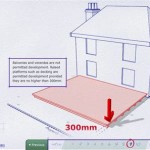How To Build A Pea Gravel Patio On Sloped Ground In Virginia
Creating an outdoor living space on sloped ground in Virginia can present unique challenges. However, a pea gravel patio offers an attractive, cost-effective, and relatively simple solution to transforming an uneven yard into a functional and aesthetically pleasing area. Pea gravel, with its smooth, rounded stones, provides good drainage, minimizes erosion, and offers a comfortable walking surface. This article outlines the steps involved in constructing a pea gravel patio on sloped terrain in Virginia, considering the specific environmental factors and potential challenges of the region. Proper planning and execution are crucial for a successful and long-lasting patio.
Planning and Preparation: Assessing the Slope and Gathering Materials
The initial phase of constructing a pea gravel patio on a slope involves careful planning and preparation. This stage is critical for ensuring the structural integrity and longevity of the patio. The first step is to accurately assess the slope of the ground where the patio will be built. This assessment will determine the extent of excavation and leveling required, as well as the need for retaining walls or other erosion control measures. Virginia's variable soil types, from sandy coastal plains to clay-rich Piedmont, necessitate understanding the soil composition at the project site. A soil test can provide valuable information about drainage capabilities and stability.
Once the slope and soil have been analyzed, the next step is to develop a detailed plan for the patio. This plan should include the dimensions of the patio, the placement of any retaining walls or steps, and the overall design aesthetic. Consider the existing landscape and how the patio will integrate with it. Virginia's diverse flora offers opportunities to complement the patio with native plants that thrive in the local climate. Choose plants that are adapted to the specific soil conditions and sunlight exposure of the site.
Material selection is another essential aspect of the planning phase. Pea gravel comes in various sizes and colors. Choose a size that is comfortable to walk on and visually appealing. A gravel size of 3/8 inch to 1/2 inch is generally recommended. Consider the color of the gravel in relation to the surrounding landscape and the overall design of the patio. In addition to pea gravel, other necessary materials include landscape fabric, edging material (such as treated lumber, stone, or metal edging), base material (such as crushed stone or gravel), and construction adhesive. The quantity of each material will depend on the size and design of the patio.
Before commencing any excavation, it is crucial to check for underground utilities. Contact Miss Utility of Virginia (call 811) to have utility lines marked before digging. This free service can prevent accidental damage to underground infrastructure and ensure the safety of everyone involved in the project. Obtaining any necessary permits from the local municipality is also essential. Building codes and zoning regulations may vary depending on the location and scope of the project.
Finally, gather the necessary tools and equipment. These may include shovels, rakes, a wheelbarrow, a level, a tamper, a measuring tape, a saw, and safety glasses. Consider renting larger equipment, such as a plate compactor, if the patio is particularly large or if the soil is heavily compacted. Prioritize safety by wearing appropriate personal protective equipment, including gloves, safety glasses, and sturdy footwear.
Excavation, Leveling, and Retaining Wall Construction
With the planning and preparation complete, the next stage involves excavation, leveling, and the potential construction of retaining walls. This is the most physically demanding aspect of the project and requires careful attention to detail to ensure proper drainage and stability. The first step is to mark the perimeter of the patio according to the plan. Use stakes and string to clearly define the boundaries.
Begin excavating the area to the required depth. The depth will depend on the thickness of the base material and pea gravel layers, as well as the slope of the ground. A general guideline is to excavate to a depth of at least 6 to 8 inches below the desired finished level of the patio. On sloped ground, more excavation will be required on the higher end of the slope compared to the lower end. Use a shovel and wheelbarrow to remove the excavated soil. Consider using the excavated soil to backfill behind retaining walls or to create berms in other areas of the yard.
Leveling the excavated area is crucial for creating a stable and even surface for the patio. Use a level and a rake to smooth out the soil. Pay particular attention to the slope of the ground, ensuring that it is graded away from any buildings or structures to promote proper drainage. A slight slope of approximately 1 to 2 percent is generally recommended. Use a tamper to compact the soil, creating a firm base for the next layer of materials.
If the slope is significant, retaining walls may be necessary to prevent erosion and maintain the level of the patio. Retaining walls can be constructed from various materials, including treated lumber, stone, or concrete blocks. The design and construction of retaining walls should adhere to local building codes and regulations. Consider consulting with a structural engineer if the retaining wall is particularly tall or complex. Proper drainage behind the retaining wall is essential to prevent hydrostatic pressure from building up and potentially causing the wall to fail. Install a drainage system consisting of perforated pipes and gravel behind the wall to allow water to drain away freely.
Once the excavation and leveling are complete, install the edging material around the perimeter of the patio. The edging should be buried partially in the ground to provide a stable barrier that prevents the pea gravel from spreading. Secure the edging material with stakes or construction adhesive. The edging should be level and flush with the surrounding ground.
After installing the edging, spread a layer of base material (such as crushed stone or gravel) over the excavated area. The base material should be approximately 4 to 6 inches thick. Use a rake to distribute the base material evenly and a tamper or plate compactor to compact it. The base material provides a stable and well-draining foundation for the pea gravel.
Installing Landscape Fabric and Pea Gravel
With the preparation completed, the final stage involves installing landscape fabric and the pea gravel itself. This is where the patio truly begins to take shape. The first step is to lay down landscape fabric over the base material. Landscape fabric is a permeable material that allows water to drain through while preventing weeds from growing up through the pea gravel. Overlap the edges of the landscape fabric by at least 6 inches to ensure complete coverage. Secure the landscape fabric with landscape staples or pins.
Once the landscape fabric is in place, it is time to spread the pea gravel. Use a wheelbarrow to transport the pea gravel to the patio area. Shovel the pea gravel onto the landscape fabric, starting at one corner and working your way across the patio. Spread the pea gravel evenly with a rake. The pea gravel layer should be approximately 2 to 4 inches thick. A thicker layer of pea gravel may be necessary in areas where the slope is more pronounced.
Distribute the pea gravel evenly, ensuring that it is level and smooth. Use a rake to fine-tune the surface and remove any bumps or dips. A properly installed pea gravel patio should provide a comfortable and stable walking surface. Periodically rake the pea gravel to maintain its appearance and prevent it from becoming compacted.
Consider adding decorative elements to enhance the aesthetic appeal of the patio. These may include potted plants, outdoor furniture, lighting, or a fire pit. Choose elements that complement the overall design of the patio and the surrounding landscape. Virginia's climate allows for a wide range of outdoor activities, so design the patio to suit your specific needs and preferences.
Regular maintenance is essential for keeping the pea gravel patio in good condition. Remove any debris, such as leaves or twigs, that may accumulate on the surface. Rake the pea gravel periodically to redistribute it and prevent it from becoming compacted. Add more pea gravel as needed to maintain the desired thickness. Consider applying a weed killer or herbicide to prevent weeds from growing in the pea gravel. Inspect the edging and retaining walls regularly for any signs of damage or deterioration. Repair any damage promptly to prevent further problems.
Building a pea gravel patio on sloped ground in Virginia requires careful planning, preparation, and execution. By following these steps and considering the specific environmental factors of the region, it is possible to create a beautiful and functional outdoor living space that will provide years of enjoyment.

Hillside Gravel And Timber Path Done Digging

Hillside Gravel And Timber Path Done Digging

Hillside Gravel And Timber Path Done Digging

Hillside Gravel And Timber Path Done Digging

How To Build A Rock Patio Saunders Landscape Supply

How To Lay Pea Gravel And Spruce Up Your Yard In 8 Steps Angi

How To Lay Pea Gravel And Spruce Up Your Yard In 8 Steps Angi

How Can I Put In Landscape Steps On A Slope Leading To My Backyard Hometalk

Hillside Gravel And Timber Path Done Digging

How To Build A Gravel Path The Right Way Revolutionary Gardens
See Also








